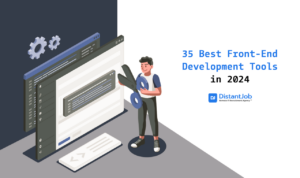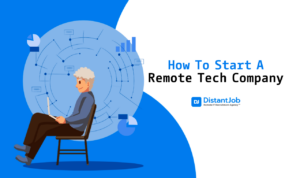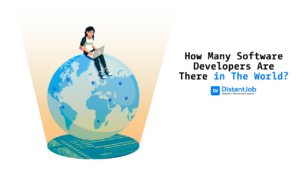Technologies change by the day, and dynamic web development is the key to great interactive user experience. This makes databases a vital part of the long-term success and progress of any web project’s long-term success and progress, and naturally, questions start to appear, such as: What are the differences between SQL and MySQL?
See, even basic applications such as a weather forecast app relies on a database. Content updates on each view your website or app happens thanks to a system meant to store, retrieve, and modify data from a database.
So, it’s essential to learn more about relational database management systems (RDBS) and how to apply them in the best way or hire a database developer to help.
Keep on reading if you are a Web developer, managing a WordPress website, using Joomla, Drupal, or any other tech piece that relies on a growing database.
In this guide, we will help you get a basic understanding of SQL, MySQL, or SQL Server (MSSQL), and how to choose one or the other for your web project.
But first, before we dive into the specifics of each, let’s look into the foreword of comparison.
How to Use Databases in Dynamic Web Development?
A dynamic website displays different content anytime your web site is visited. This might depend on the time of day, the region, or a user’s action on your site. Take a weather forecast, for example, or display a specific product range depending on the user’s selection.
All these dynamic web services are based on relational database management systems. These systems connect tables and data records giving you a wealth of information to retrieve.
In dynamic web development, this is where SQL, MySQL, or SQL Server come into place. These help you query and retrieve information from a database to power your service, be it an app, website, or maybe more complex systems.
What is a Relational Database Management System?
A relational database management system (RDMS) is a software through which a person can interact with databases to update, modify, and administer the data – in short, to use the data productively. The values in each table correlate to each other – making it possible to query various tables simultaneously.
MySQL and SQL Server are the best known and most popular RDMS systems in the market.
- As an open-source system MySQL supports a huge market share of approximately 40%.
- SQL Server is Microsoft’s relational database management system.
Both programs are based on SQL, which is the Structured Query Language used to formulate queries. They both deploy tables to store data or primary and foreign essential references, and they can manage multiple databases within a single server.
There are, of course, differences between MySQL and SQL Server.
Let’s have a closer look.
SQL vs. MySQL – What’s the Difference?
Is MySQL a language? No.
- SQL is short for Structured Query Language and it’s a standard language to manage data stored in relational databases.
- As SQL is a query language and not a software product, the commands are always the same, just as in a programming language. Although there are no updates to it, learning SQL will take quite some time. It’s for professional web developers spending most of their time creating programs and handling databases.
- To work directly with SQL, you will need to learn the query language from scratch. Learning and remaining fluent will take some time, in particular, if you are not using it every day.
- MySQL pronounced “My sequel”, is an open-source product developed in the ’90s that builds on top of the SQL language that allows management of a database.
- Contrary to SQL, MySQL gets frequent updates.
- MySQL doesn’t require tons of hours to learn and you can use straight out of the box.
Okay, let’s look at the PROS to each:
Benefits of SQL
SQL supports XML and user-defined functions when handling and querying the database.
When using pure SQL, there is no specification of how to reach a record, and you can access several records by a single command. The downside is reduced portability. Even though it is in accord with ISO/IEC 9075, you will need to customize different database systems.
Benefits to MySQL
MySQL, on the contrary, is ready to use and will be updated/completed with extra features. This is also true for SQL Server. Both MySQL and MS SQL Server are written in C and C++ coding languages.
Both MySQL and SQL Server are using SQL to create queries for databases and help you to store, retrieve, modify, and administrate a database. But of course, there are differences in the general usages and functionality.
What Is The Difference Between MySQL and a SQL Server
With MySQL and SQL Server we are looking at two of the most popular Relational Database Management Systems. They are both using SQL but have unique features and fit different requirements.
So, what are the key differences between MySQL and SQL Server?
- MySQL is open-source software, it has a free to use edition and is supported by a large community whereas SQL Server is Microsoft’s relational database management system and purely proprietary. Released in 1989 and written in C and C++, it needs to be licensed, and its source code is not open for others.
- SQL Server’s big advantage is the ease of use. It also supports more languages, which is good for international teams, and it has better security features.
- MySQL, however, compared to SQL has a broader integration portfolio and supports more platforms, more coding languages, and more storage systems. It also relies on a big community providing excellent support and insights into almost every problem via the internet.
- MySQL allows view only, where Microsoft’s SQL Server makes views indexable.
- XML is supported in SQL Servers but not MySQL.
- SQL servers can autotune, MySQL can not.
- MySQL does not support user-defined functions, where a SQL server does.
- No cursor to MySQL but present for SQL servers.
- For problems with Microsoft SQL Server, you have to contact Microsoft for support and wait for a response.
Here are the key differences by category in a nutshell:
Comparison Table : MySQL vs. SQL
| MySQL vs. SQL Server | MySQL | SQL Server |
| Syntax: | More complex | Known as easy-to-use |
| Languages: | English | Multilingual |
| Platforms: | Almost all Operating Systems including Linux, Windows, macOS, and Solaris. | Supports Windows, Windows Server and via docker Linux and macOS with fewer features. |
| Programming languages: | C++, Java, Go, PHP, Python, VB, and R plus Perl, Scheme, Tcl, and Haskel. | Multiple programming languages such as C++, Java, Go, PHP, Python, VB, and R. |
| Storage engine: | Multiple storage engines. | Single storage engine developed by Microsoft. |
| Security: | Unknown processes can access and modify the data. | Unknown processes can not access or manipulate the data. |
| Editions: | Free, open-source Community edition plus Standard, Enterprise, and Cluster GCE. | Free developer and express edition. Plus Enterprise, Standard, and Web. |
SQL vs. MySQL: Pricing
Both systems have paid editions. It’s best if you check and compare pricing individually depending on your requirements.
- MySQL has a free open source community edition.
- Microsoft offers a free developer and express edition for SQL Server.
Is MySQL better than SQL Server: How to Choose?
Selecting your relational database management system requires an in-depth look.
- Research what suits your needs best.
- Get as much information as you can.
- Seek recommendations, and then choose carefully.
It’s hard to make general recommendations, though. When it comes to technical flexibility MySQL seems like a better option, while for ease-of-use or security SQL Server leans the better choice.
Generally, it seems if you are opting for a medium or small-sized web app using PHP, MySQL might be your system.
If you require more security and enterprise-related features for a larger company, SQL Server seems the better fit.
Dynamic Calculations, Charts, and Database Architecture
Any database query you make can display information but not without robust data quality management. To add calculations or dynamic charts, say for a price calculation, or provide a user’s Body Mass Index, you will need some powerful hard coding.
However, lately, there is a no-code alternative. Modern tools allow additions to your average MySQL and SQL Server. No-code platforms will enable you to create dynamic mobile and web apps without coding and embed them into your website. A good example comes from Open as an App, which allows you to turn SQL to an app in a seemingly and zero-code manner. Such no-code calculation apps replace hard-coded logic development and save a lot of time. Based on MySQL, SQL Server, and PostgreSQL to automatically include automated data analysis and dashboards, technology shortens the path between people and opportunities.
There are some powerful applications that you can build for your website using databases. So, let’s dive deeper into things and start at the beginning.
SQL vs MySQL Wrap-up
There are, of course, other SQL systems. For this guide, we compared the ups and downs of MySQL and SQL Servers because they are among the most popular systems. Choosing the right setup for your company’s needs or software development throughout the entire software development cycle comes down to a wide range of factors. We hope you take away some ideas and advice above to help you choose the right one for your projects. And of course, if you need to scale your team with the best IT talent, contact us! We are experts in the art of remote recruiting.




